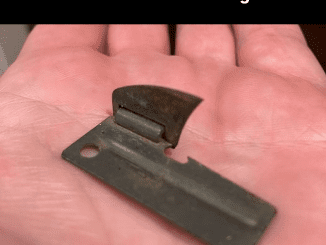In the vast and unforgiving expanse of the desert, a man was found dead, his lifeless body surrounded by an unopened package. Seemingly equipped with the necessary provisions to survive the harsh conditions, the mystery of his untimely demise only deepened as investigators began to unravel the true nature of this perplexing puzzle.
As authorities delved deeper into the case, they uncovered a startling revelation that defied all initial assumptions. The man’s cause of death was not related to a lack of resources or foul play, but rather a catastrophic equipment failure that had sealed his tragic fate.

Contrary to the initial suspicions, the man was not stranded in the desert, struggling to survive. Instead, he had been attempting a high-risk activity – a parachute jump from a plane. The unopened package beside his body contained his parachute, which had failed to deploy properly, leading to his fatal plunge to the ground below.
This startling revelation highlights the critical importance of proper equipment maintenance and safety protocols, especially in high-risk activities. A single point of failure, such as a malfunctioning parachute, can have devastating consequences, even for those who are otherwise well-equipped to face the challenges of their environment.
Riddles and puzzles that revolve around unexpected or counterintuitive explanations are often the most captivating. They challenge us to think beyond the obvious and consider alternative scenarios, pushing the boundaries of our problem-solving skills and cognitive abilities.
The “Man in the Desert” tragedy serves as a sobering reminder that even in the most extreme situations, a single mistake or equipment failure can have fatal consequences. It underscores the fragility of life and the importance of being prepared, vigilant, and attentive to every detail, no matter the circumstances.
This intriguing “Man in the Desert” puzzle is sure to captivate the imagination of your family and friends. Presenting them with the initial scenario and challenging them to deduce the unexpected truth can lead to engaging discussions and valuable insights into problem-solving, risk assessment, and the importance of preparedness.
Puzzles and riddles that challenge our preconceptions and assumptions can be powerful tools for cultivating critical thinking skills. As individuals wrestle with the “Man in the Desert” conundrum, they’ll be forced to consider multiple perspectives, think creatively, and draw upon their knowledge and reasoning abilities to arrive at the unexpected, yet tragic, conclusion.
The “Man in the Desert” puzzle not only intrigues and entertains but also serves as a springboard for deeper discussions. By exploring the underlying themes of equipment reliability, risk management, and the fragility of life, this puzzle can inspire meaningful conversations that leave a lasting impact on those who engage with it.
Tackling puzzles and riddles that defy our initial assumptions challenges us to expand our problem-solving skills. By embracing the unexpected and considering alternative explanations, we can develop a more agile and adaptable mindset, better equipped to navigate the complexities of the real world.
The “Man in the Desert” puzzle is a captivating example of how the unexpected can hold the key to unraveling even the most perplexing of mysteries. By challenging our preconceptions and pushing us to think beyond the obvious, this tragic tale serves as a powerful reminder of the importance of preparedness, attention to detail, and the fragility of life.
As you share this intriguing puzzle with your loved ones, embrace the opportunity to engage in thought-provoking discussions, hone your critical thinking skills, and gain a deeper appreciation for the unexpected twists and turns that life can present. The “Man in the Desert” mystery may have had a tragic ending, but the lessons it imparts can inspire us to be more vigilant, adaptable, and resilient in the face of life’s unpredictable challenges.


